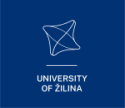|
|
|
Conference Tutorials
|
Uvais Qidwai |
Parametric Modeling of Ultrasonic signals in Nondestructive Testing applications in Oil & Gas industry
Abstract
Models describe relationships between measured signals. It is convenient to distinguish between input signals and output signals. The outputs are then partly determined by the inputs. Think for example of an airplane where the inputs would be the different control surfaces, ailerons, elevators, and the like, while the outputs would be the airplane's orientation and position. In most cases, the outputs are also affected by more signals than the measured inputs. In the airplane example it would be wind gusts and turbulence effects. Such “unmeasured inputs” will be called disturbance signals or noise. More.... ![]()
Who should attend?
The tutorial is designed around the hands-on presentation of applied mathematical techniques to the NDT domain. Anyone with keen interest in mathematical modeling, NDT for metallic structures such as pipes etc… can benefit from this tutorial. No real background is needed as well since most of the concepts will be explained from scratch.
Outline of the topics:
1. Basics of 1D Parametric modeling.
2.`Basics of Ultrasonic NDT.
3.`Defect Signatures for commonly occurring defects in metals.
4.`Defect Signatures for Welded joints.
5. Modeling of the Defect Signatures; Basic Auto Regressive Moving Average (ARMA) structure.
6. Advanced Deconvolution Techniques to model Defect Signatures; Higher Order Statistics (HOS), and H identification approaches.
Modeling ECG and EEG signals for possible Classification applications
Abstract
An electrocardiogram (ECG) records the electrical activity of the heart. The heart produces tiny electrical impulses which spread through the heart muscle to make the heart contract. These impulses can be detected by the ECG machine. You may have an ECG to help find the cause of symptoms such as palpitations or chest pain. Small metal electrodes are stuck on to your arms, legs and chest. Wires from the electrodes are connected to the ECG machine. The machine detects and amplifies the electrical impulses that occur at each heartbeat and records them on to a paper or computer. A few heartbeats are recorded from different sets of electrodes. There are normal patterns for each electrode. Various heart disorders produce abnormal patterns. The heart disorders that can be detected include: Abnormal heart rhythms, heart attack (myocardial infarction), an enlarged heart, scarred heart due to a heart attack, etc… More....![]()
Who should attend?
The tutorial is designed around the hands-on presentation of applied mathematical techniques to the ECG and EEG signals. Anyone with keen interest in mathematical modeling, Pattern Recognition, and general Signal Processing etc… can benefit from this tutorial.
Topics
1) Introduction to ECG and EEG signals.
a. Probes and Simulators.
b. Data Acquisition.
c. Signal characteristics.
2) Basics of 1D Parametric modeling.
a. ARMA and Time series models.
b. Hidden Markov Models (HMM)
3) Basics of some of the related Signal Processing techniques.
a. Time-Frequency Analysis.
b. Wavelet Analysis.
4) Detecting Signatures for certain disease and/or activity using ECG and/or EEG signals.




 Tel:(974) 4403-4276
Tel:(974) 4403-4276 Fax:(974) 4403-4241
Fax:(974) 4403-4241 E-mail:
E-mail: 







